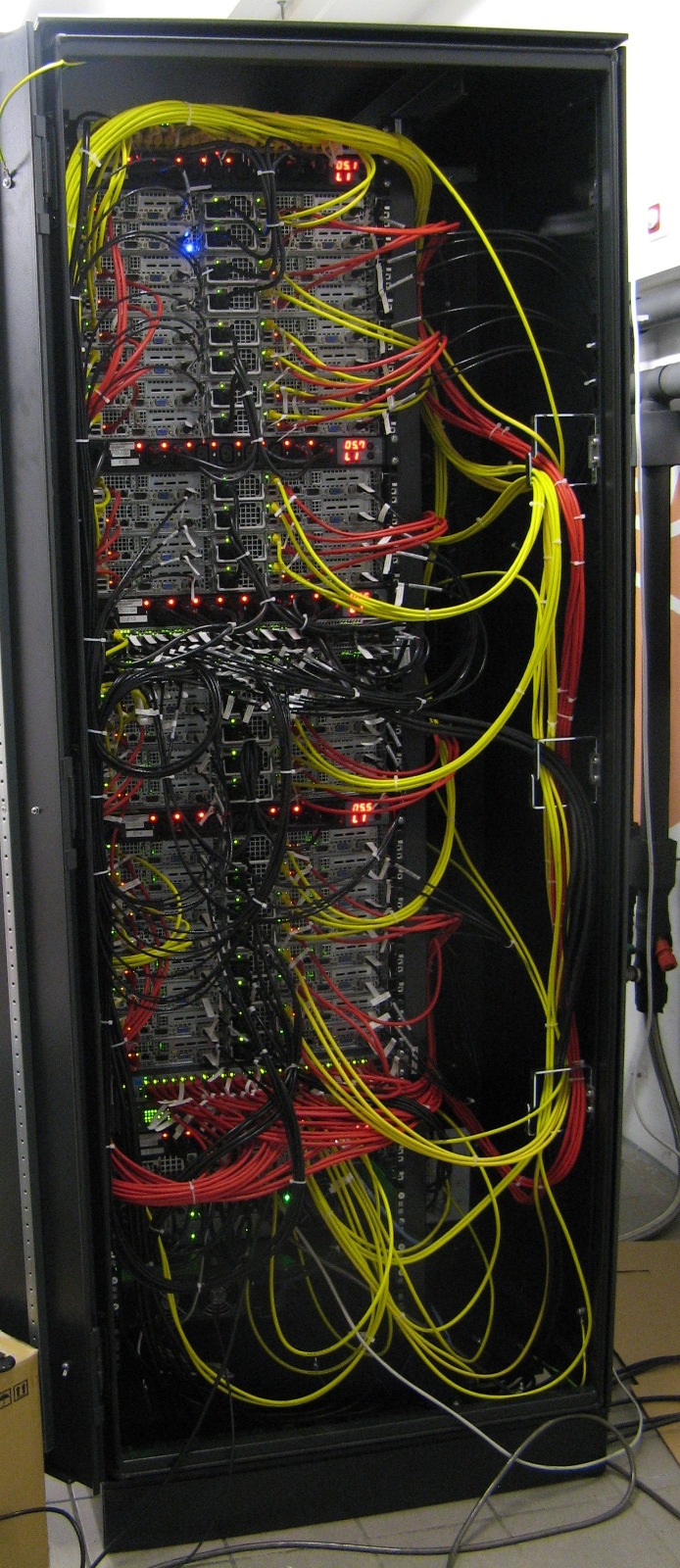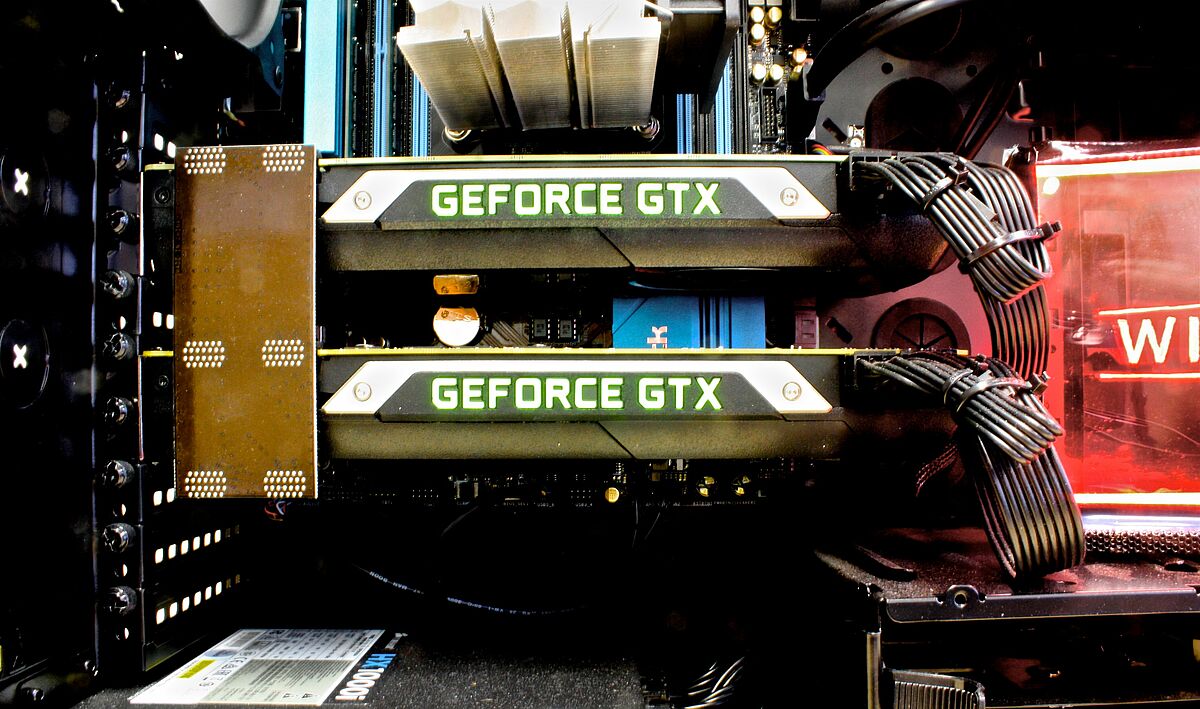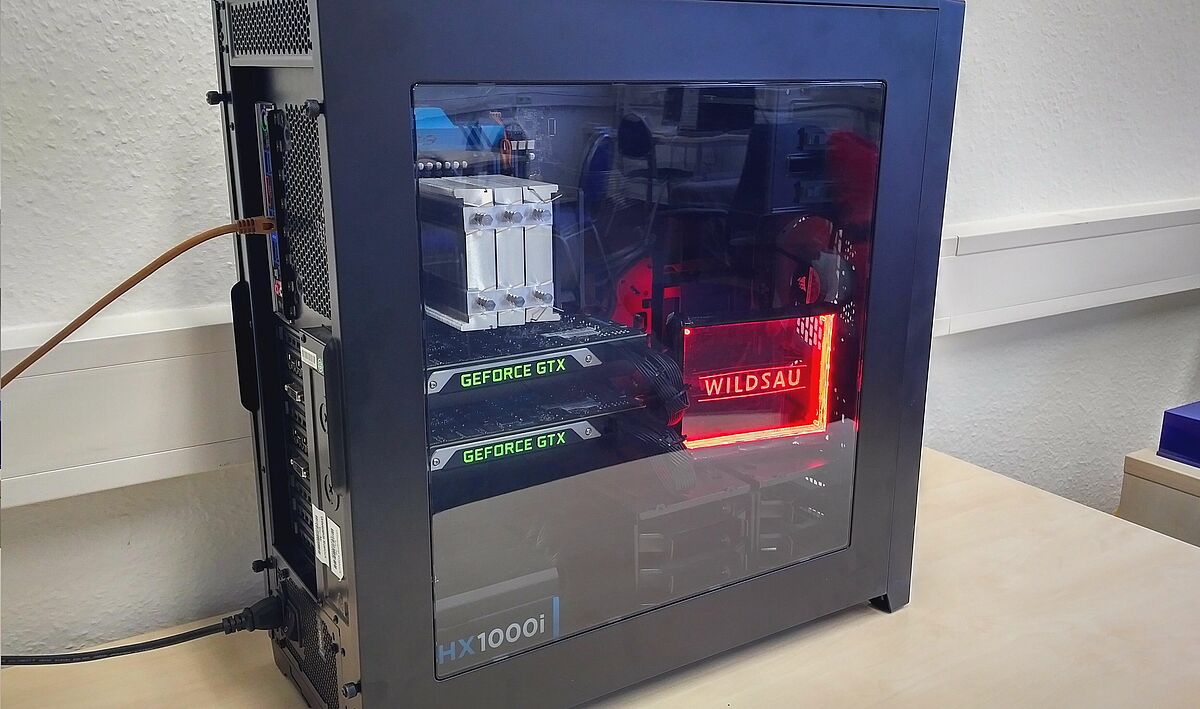In our working group we mainly apply molecular dynamics and quantum-chemical theoretical methods. The purpose of these techniques is to support our experimental findings with complementary results from theory. Our main goal is to combine theory and experiment to achieve a comprehensive understanding of the structural and dynamical properties of the matter under investigation.
For these calculations a dedicated High Performance Computing (HPC) Cluster by transtec, Germany, is available to our group. Consisting of 52 compute nodes equipped with 2 AMD Opteron CPUs each, an overall number of 1248 CPU cores and 3.3 TByte main memory can be addressed. The single nodes are communicating among each other via an Infiniband network. With the help of this cluster even elaborate and time-consuming calculations and molecular dynamics simulation projects can be performed. For particularly long-term MD simulations, a mixed CPU/GPU cluster is currently being built up as an addition to our HPC cluster.
The installed software for quantum-chemical calculations mainly comprises the Gaussian-09 package as well as the QM codes Turbomole, GAMESS and ORCA. For chemical bond analysis, we apply the NBO 6.0 program. Molecular dynamics simulations are mostly performed using the GROMACS or MOSCITO packages. Furthermore, we developed numerous programs by ourselves to be able to analyze trajectory data.



